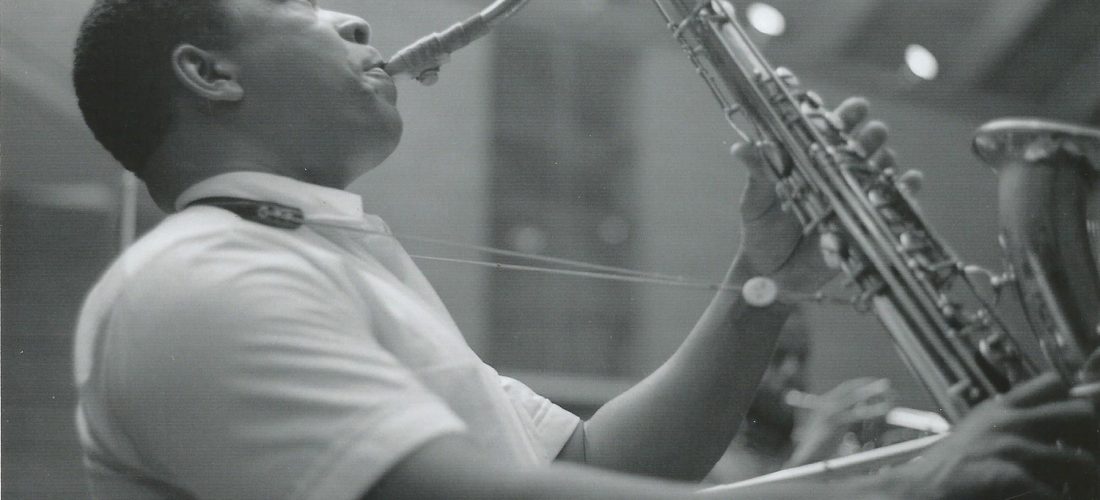John Coltrane’s ‘A Love Supreme: Live in Seattle’ Shows That His Masterpiece Was a Perpetual Work in Progress
It’s telling that some of the most memorable moments on the new John Coltrane archival release, A Love Supreme: Live in Seattle, don’t actually include John Coltrane. The original Love Supreme, the saxophonist’s legendary album-length suite of divine praise, featured the saxophonist’s rightfully named classic quartet, with pianist McCoy Tyner, bassist Jimmy Garrison, and drummer Elvin Jones; this version, recorded onstage 10 months later, in October 1965, and previously unknown even to hardcore fans, augments that band with three additional players: saxophonists Pharoah Sanders and Carlos Ward, both of whom double on percussion, and second bassist Donald Rafael Garrett. The studio version will always be definitive, but there’s something magical and almost transgressive about hearing a loose and rowdy septet power through the four movements of this now-canonical work.
During the rousing second movement, “Resolution,” Ward — a Panama-born alto player, then just 25 and still more than a year away from his first proper recording date — steps up to the mic after a brief theme statement from Coltrane. At first, Ward sounds a little nervous, reeling off brief, broken phrases, but after a couple of minutes, you hear him finding his footing atop the turbulent swing that was Jones and Co.’s trademark. Blasting out nimble, impassioned lines, Ward brings to mind a surfer who has just caught a monster wave, and is having the time of his life.
Coltrane’s late career, the period after he’d established himself as arguably the premier soloist and bandleader in jazz on a series of LPs that culminated in A Love Supreme, could have been a victory lap. Instead, it was an extended search, during which he reshuffled his working group constantly, in pursuit of a more expansive and unfettered sound in the years before his death at age 40 in 1967. Exhibit A: Ascension, recorded just a few months before A Love Supreme: Live in Seattle, on which he featured seven guest musicians, many of them luminaries of the rising avant-garde, alongside the classic quartet, forming an ecstatic mini orchestra. And the day after the original Love Supreme studio date in December 1964, Coltrane invited saxophonist Archie Shepp and bassist Art Davis to join in for a sextet take on the first movement, “Acknowledgement,” that sat unreleased until 2002.
In that context, A Love Supreme: Live in Seattle — only the second known concert recording of the suite, sourced from the tape library of the Seattle musician Joe Brazil, whose band opened for Coltrane at local club the Penthouse — feels like another important milestone. This particular week of shows was already familiar thanks to an earlier live album drawn from the same run. Both releases notably document a band in transition (Tyner and Jones would soon leave the group, while Sanders would perform with Coltrane until the latter’s death); this latest one, which lasts more than double the length of the studio Love Supreme, shows additionally how for Coltrane, his weightiest statement to date wasn’t a fixed masterpiece but a perpetual work in progress, a launchpad to the next phase of his quest.
As fierce and inspired as Coltrane sounds here — consistent with other roughly contemporary albums, like Sun Ship, Transition, and Live at the Half Note: One Down, One Up, that mark 1965 as perhaps his finest year on record — it’s Sanders who burns the hottest. On “Acknowledgement,” the then–24-year-old, who had just joined the band at the beginning of the Penthouse stint, solos after Coltrane’s initial salvo, emitting a stream of roars and growls that seem like they might detonate his tenor sax. When Coltrane reenters later, amid a dense thicket of percussion likely featuring Sanders on cowbell, you can hear the leader testing out the extremes of his range and relishing the energy crackling all around him. (While the album’s simple stereo recording has excellent you-are-there presence, the one drawback is that the horns are sometimes drowned out by the thunderous drums.)
Coltrane doesn’t even solo on movement three, “Pursuance,” where Sanders squares off with Jones during a searing piano-less passage and Tyner later shows — during his one extended solo of the set — that he could summon plenty of fury of his own. But this rendition of the suite isn’t just one sustained peak: “Acknowledgement” ends almost casually, with a campfire-style percussion breakdown, and leads into a Garrison-Garrett bass duet that riffs playfully on the movement’s classic four-note vamp.
The shaggy, communal-jam spirit of the first three movements and various solo and duo interludes that join them together make the relatively brief, focused fourth section, “Psalm”— famously based on an original poem by Coltrane — feel all the more potent. The original is a sort of free gospel hymn that glows with a barely contained spiritual fervor, which fully erupts in this considerably wilder version. Ward and Sanders don’t appear here, but they aren’t missed, as Coltrane rises to scorching peaks and Jones bashes his toms with mallets. Charting the course of Coltrane’s career, you can almost read this “Psalm” as an elegy for the brilliant phase that was coming to an end — and a clearing of the way for the fearless exploration still to come.
